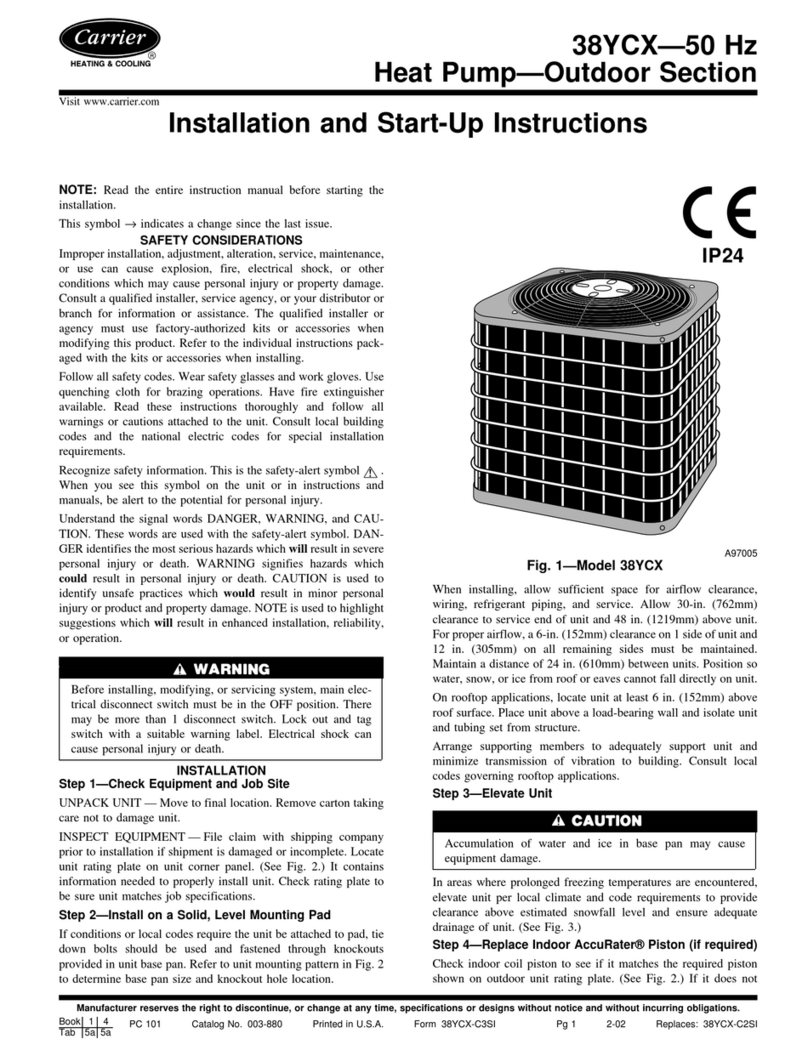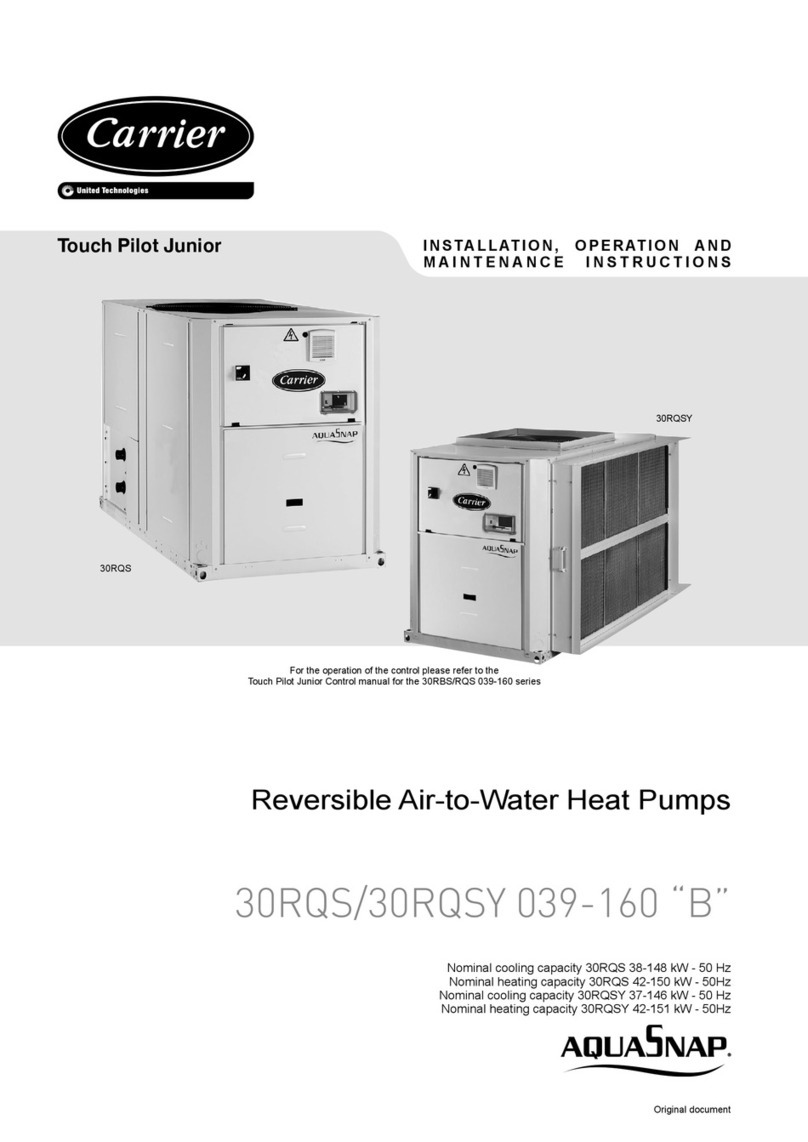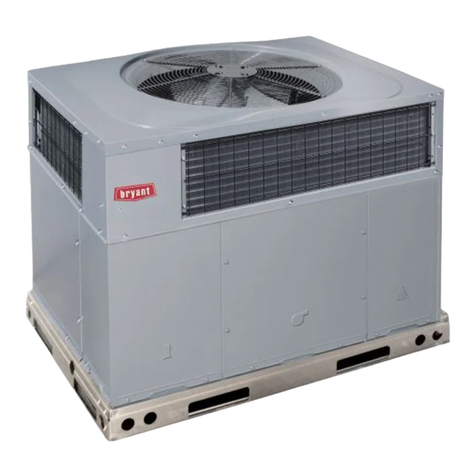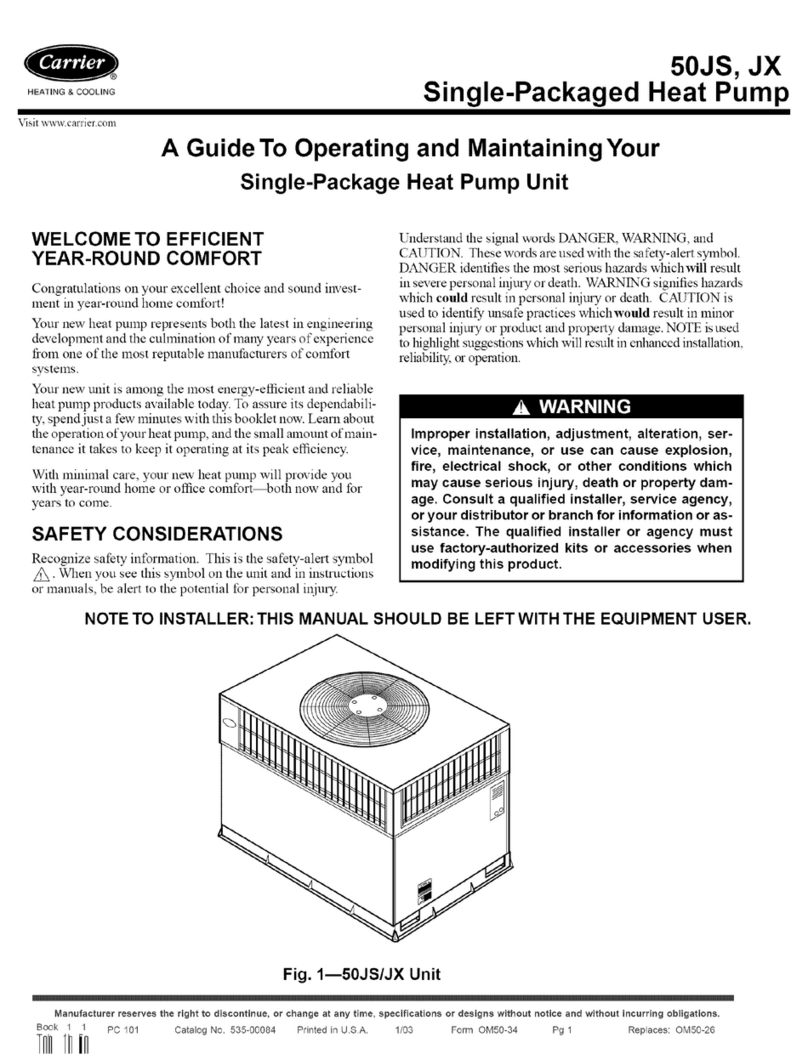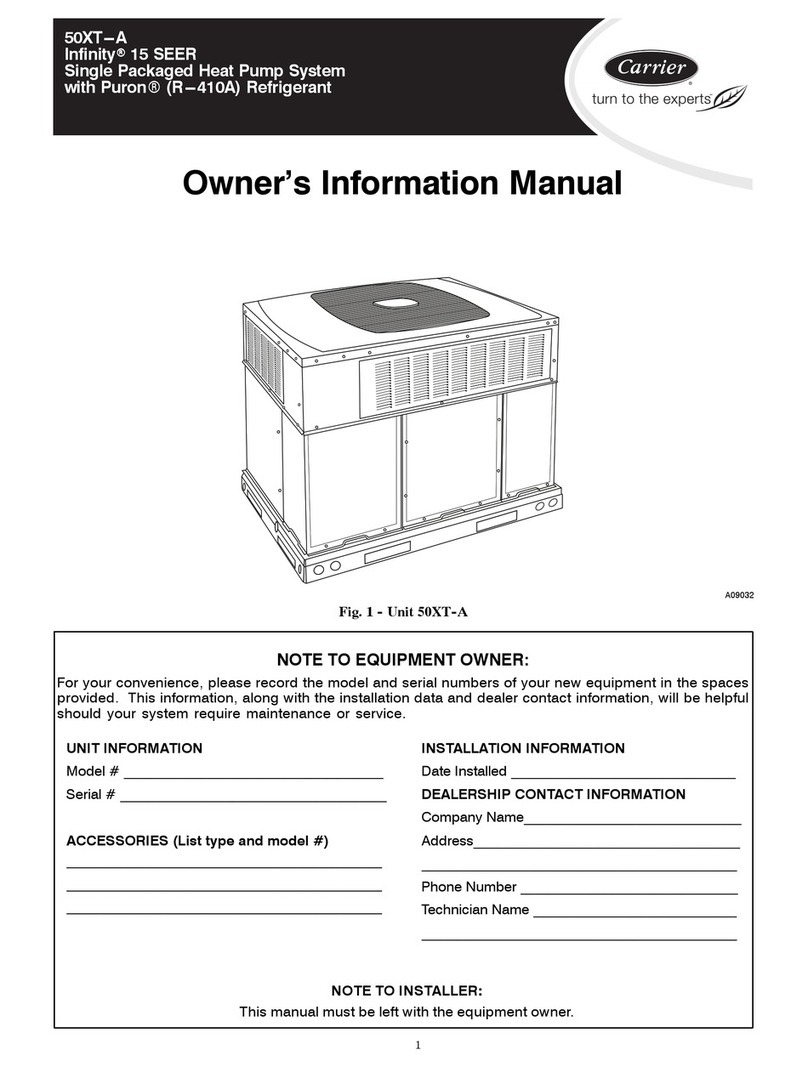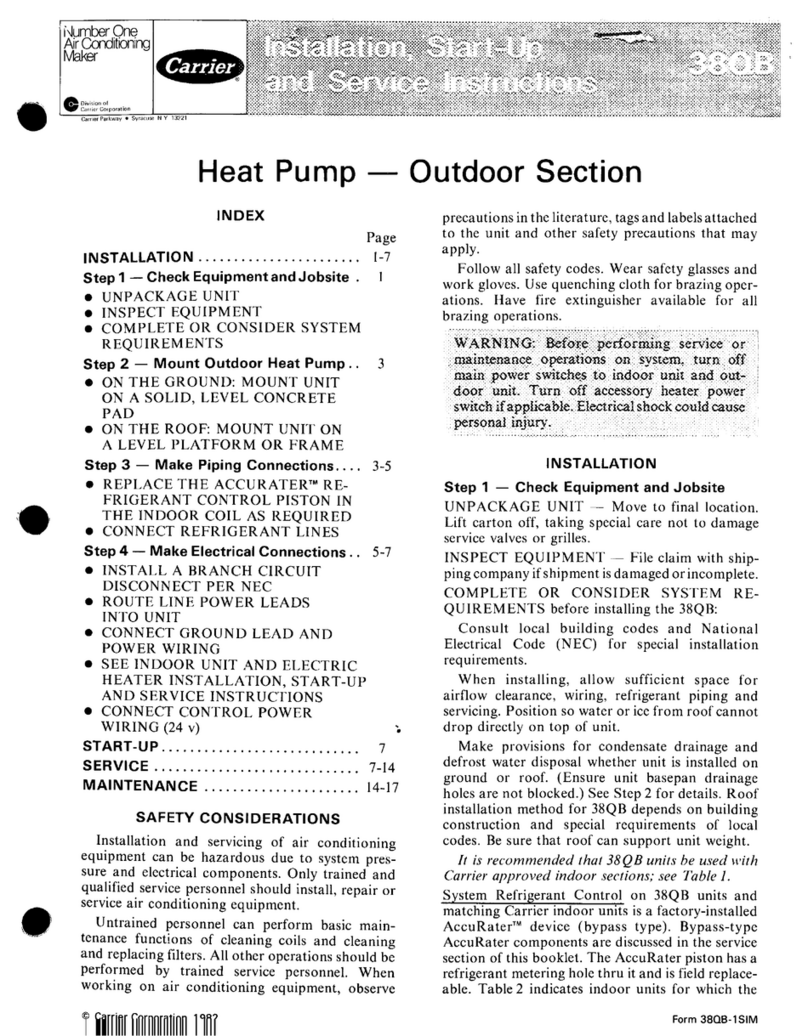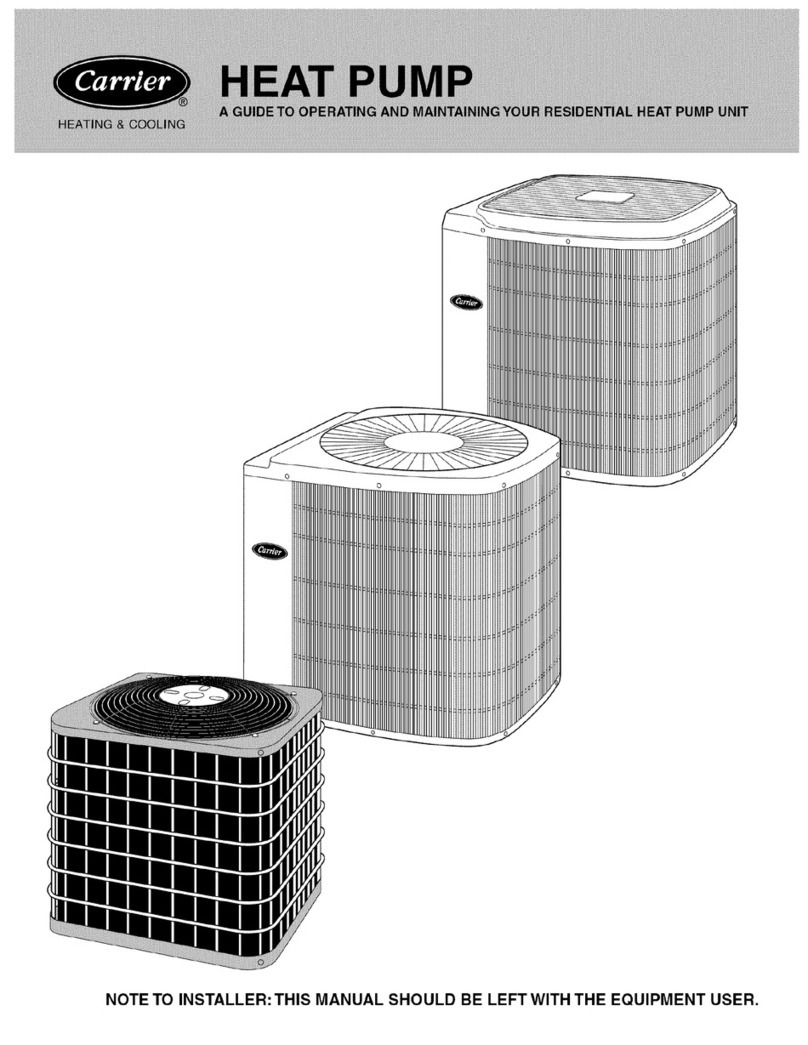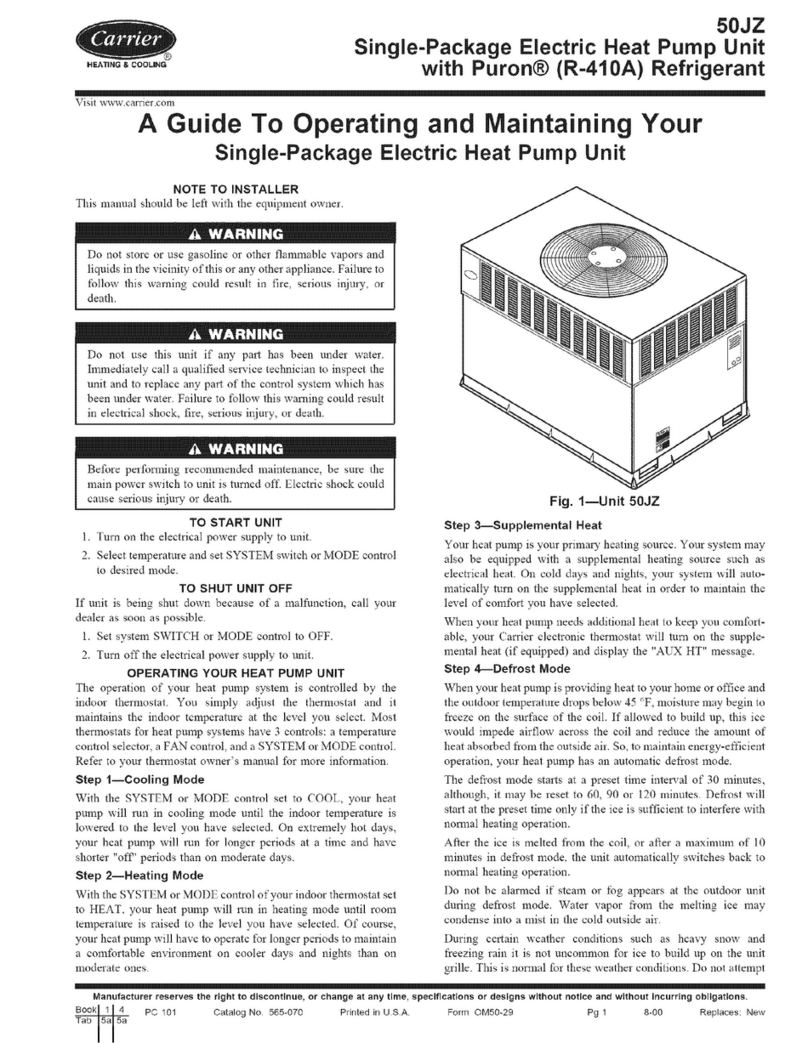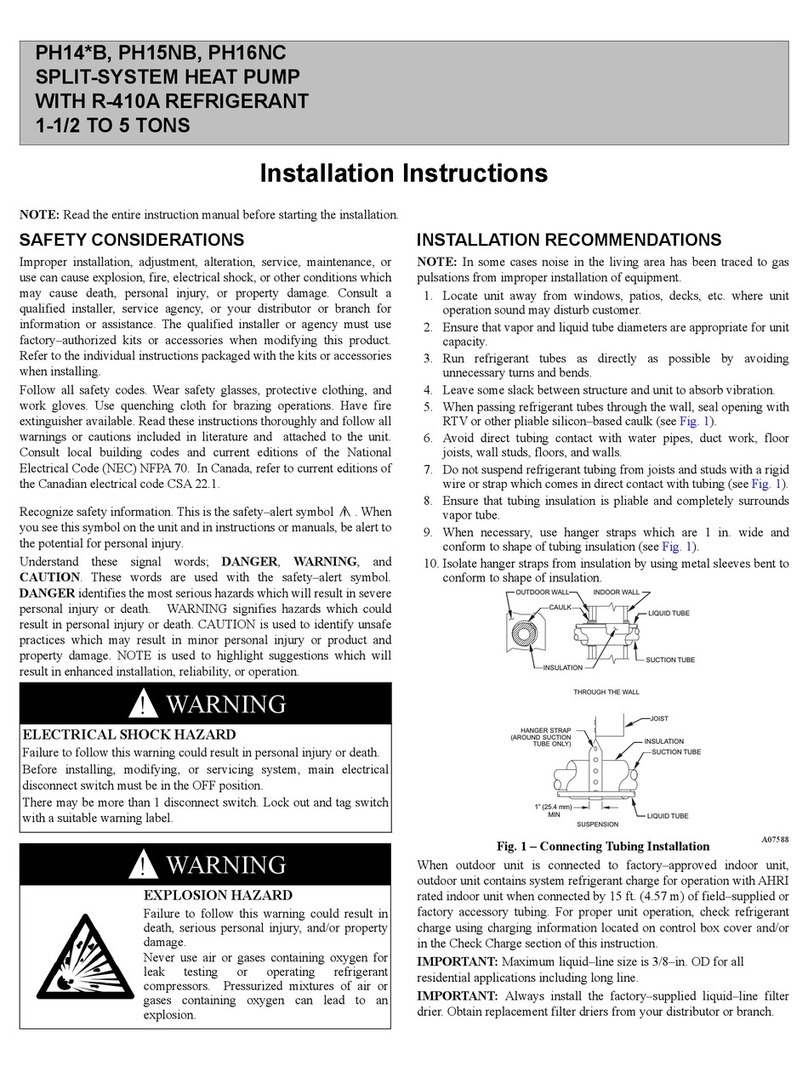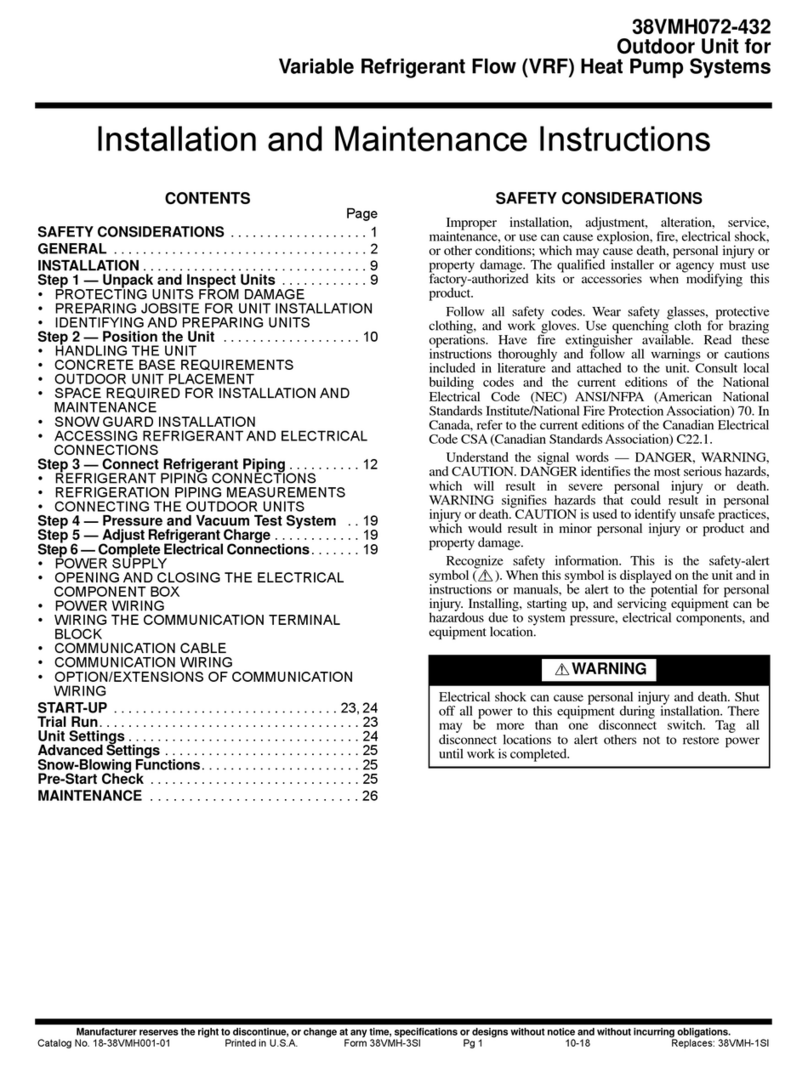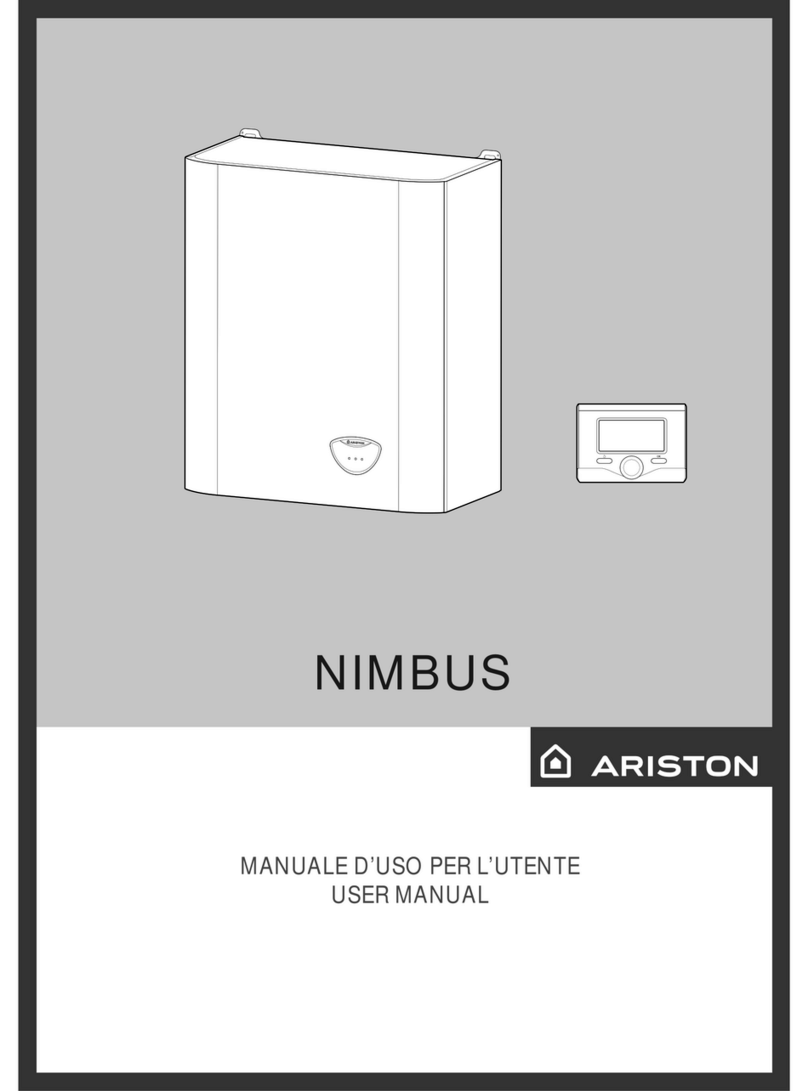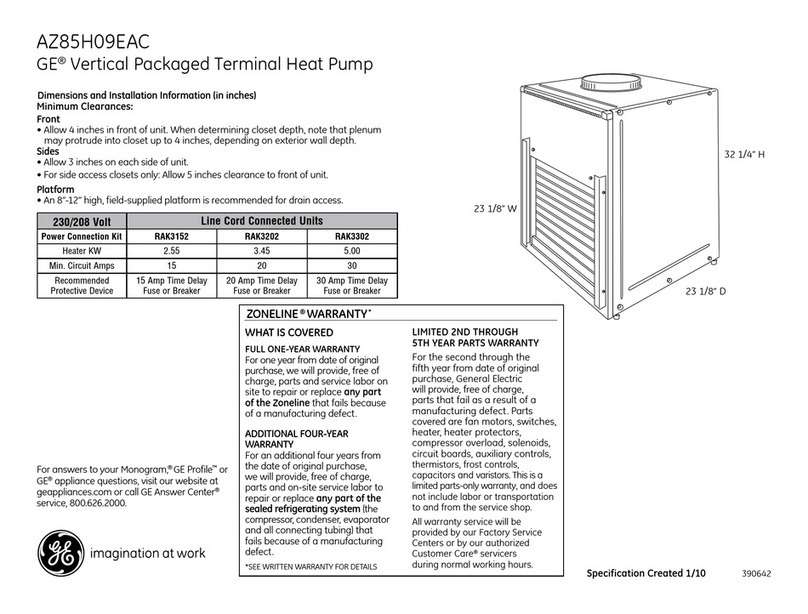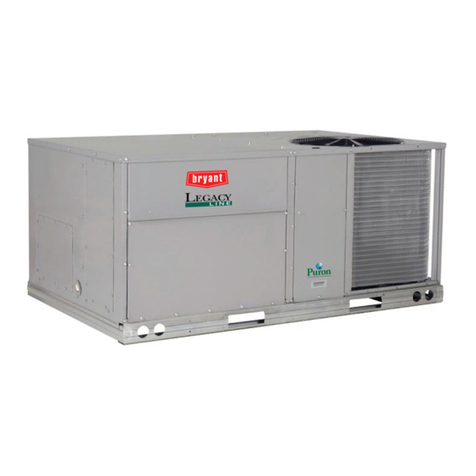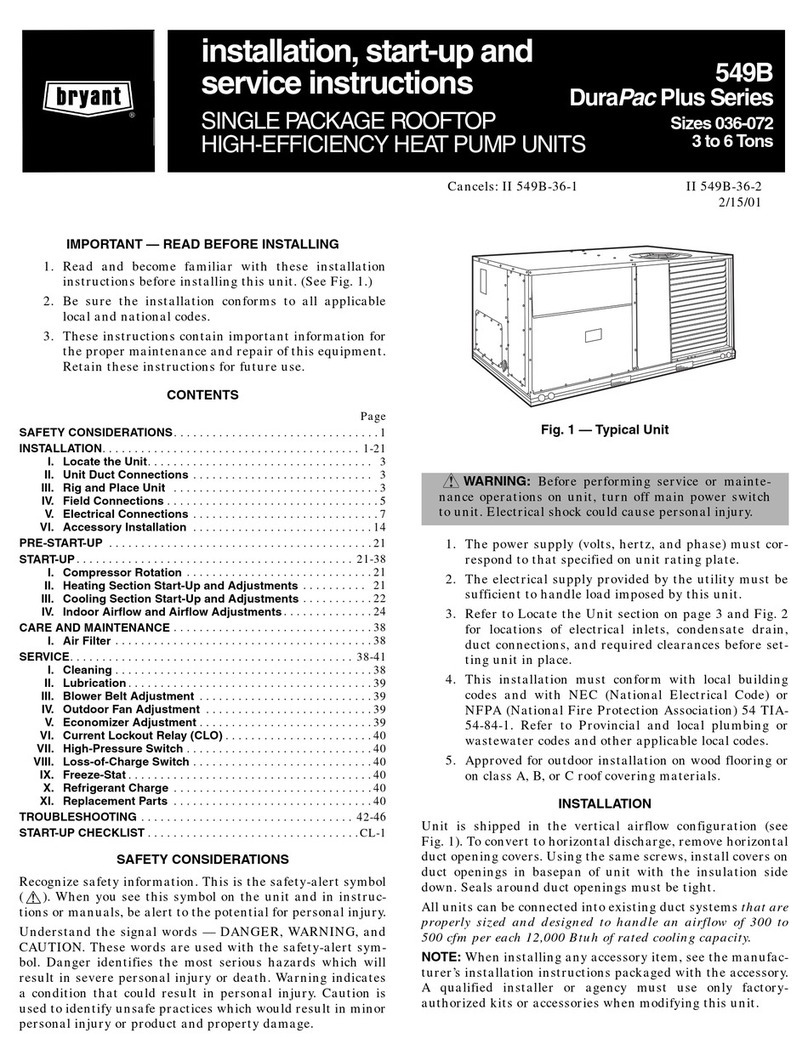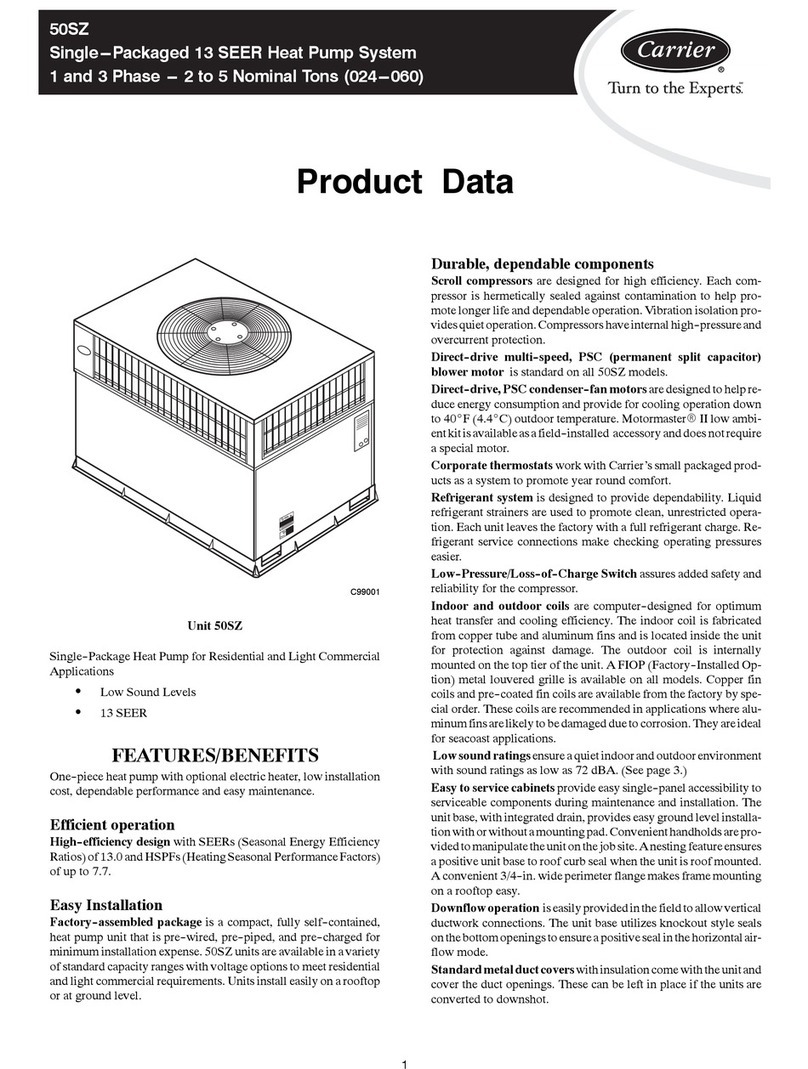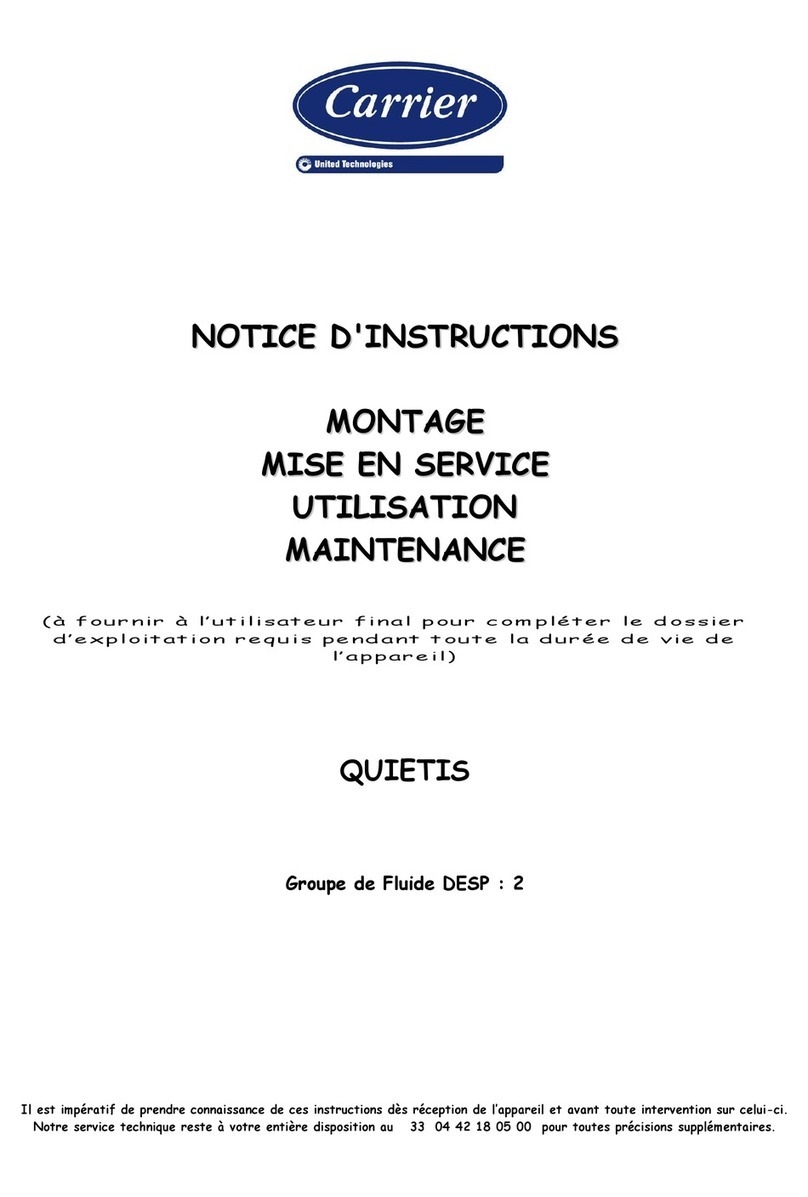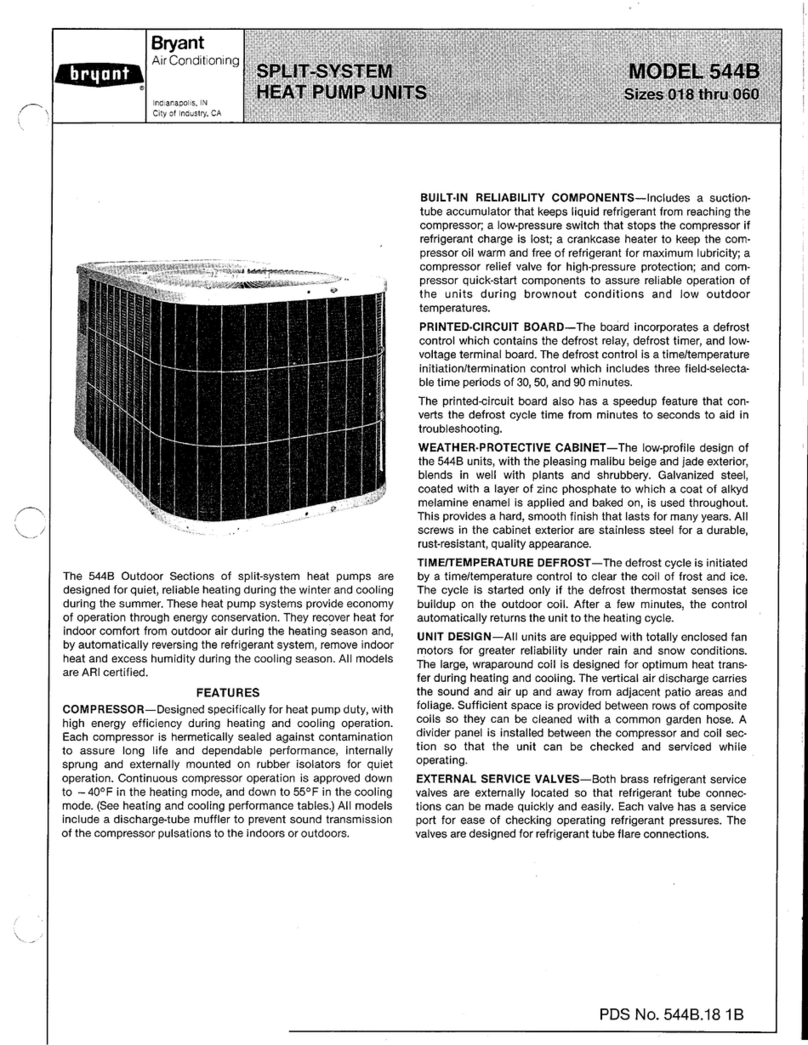lkwspecific identification of a unit. You should lkuniliafize yoursell'
with the product, model, and serial numbers listed on each rating
plate. Record them lkwlinure reli:rence in the space provided at the
end of this booklet.
iMPORTANT FACTS
To better protect your investn-lent and to eliminate unnecessary
calls_ familiarize yourself with the lollowing facts:
1. Your heat pump system should never be operated without a
clean air filter properly installed. Plan to inspect the filter
periodically. A clogged air filter will increase operating costs
and shorten the life ol' the unit.
2. Supply-air and return-air registers should not be blocked.
Drapes, limfiture, and toys are some o1' the items commonly
lound obstructing registers. Restricted airflow lessens the
unit's efl'iciency and lili: span.
3. The outdoor unit must have unrestficted airflow. Do not cover
the unit, lean anything against it, or stand on it. Do not allow
grass clippings, leaves, or other debris to accumulate around
on top of the unit. Maintain a 30-in. nfininmm clearance
between the outdoor unit and tall grass, vines, shrubs, etc.
4. Your nmltipurpose indoor tllermostal is the control center lkw
your beat pump system. You should familiarize yourself with
its proper operation. Attempting to control the system by other
n'aeans liar instance, switching the electrical supply power
ON and OFF may cause damage to the unit (See Fig. 3).
5. Dufing heating, increasing the thermostat setting n'aorethan 2
degrees may cause the supplemental beaters to be turned on
lor a short period ol' time to satisfy the thermostat. Needless
use of the supplementary heat reduces potential energy sav-
ings.
6. You may find that you can maintain greater personal condort
by running the fan continuously. "Air pockets" can lbrna due
to the structure of the house, placement of registers, etc. air
pockets may be too cool or warm lot your liking. Continuous
lira operation minimizes any temperature dil'R:rences. Also,
systems equipped with electronic or mechanical air cleaners
and/or humidifiers ofler the added benefits ol' having the air
continuously cleaned year-round and humidified during the
winter season.
7. Your heat pump will remove bumidity fi'om your home during
the cooling season. Al_er a R:w minutes of operation, you
should be able to see water trickle from the condensate drain.
Check this occasionally to be stare the drain system is not
clogged. OI' course, don't expect to see much drainage if you
live in a very dry environment.
8. During the beating cycle, air fi'om your registers may seem
cooler than you ndght first expect. This is because your beat
pump delivers a constant flow ol' air at around 90"F to 105°F
instead of sudden bursts ol' hot air as with a conventional
liarnace. This air may leel cooler because it is slightly less than
your skin temperature. However, it is sufl'iciently warm to
keep you comlk_llable.
9. Ice or frost will tend to lkwm on the coil during the winter
beating operation. Your heat pump is designed to automati-
cally melt the ice. When in this defi'ost cycle, it is normal lk_r
steam or ling to rise fi'om the outdoor unit. Do not be alarmed!
10. Do not operate your unit in cooling mode when outdoor
temperatures are below 55"F unless your unit was naodified lkw
low-ambient operation.
11. Do not operate your unit in heating mode when outdoor
temperatures are above 66°F unless you set your thermostat to
emergency beat mode.
FIRE AND ELECTRICAL HAZARD
Failure to lk}llow this warning could result in personal injury,
death and/or property damage.
To prevent serious injury, deafll, or property dan'mge, read
and li_llow all instructions and warnings, including labels
shipped with or attached to unit beli.we operating your new
heat pump.
OPERATING YOUR HEAT PUMP
The operation of your heat pump system is controlled by the
indoor thermostat. You simply adjust the thermostat and it
maintains the indoor temperature at the level you select. Most
thermostats l_)rbeat pump systems have 3 controls: a tenaperature
control selector, a FAN control, and a SYSTEM or MODE controh
COOLING MODE
When operating in cooling mode, your heat pump will run in
cooling mode until the indoor temperature is lowered to the level
yon have selected. On extremely hot days, your beat pump will run
li_)rlonger periods at a time and have shorter "ofP' periods than on
moderate days.
The li_llowing are typical conditions that add extra beat andk)r
humidity to your home. Your heat pump will work longer to keep
your home comfortable under these conditions:
1. Entrance doors are fi'eqnently opened and closed
2. Laundry appliances are being operated
3. A shower is running
4. More than the usual number of people are present in the bonae
5. More than the nornml number ol_electric lights are in use
6. Drapes are open on the sunny side of the home
f "x
Fig. 2--Carrier Non-Programmable Thermostat
HEATING MODE
With the SYSTEM or MODE control oI:your indoor thermostat set
to HEAT, your heat pump will run in heating mode until room
temperature is raised to the level you have selected. Of course,
your heat pump will have to operate for longer periods to nmintain
a comlkwtable environment on cooler days and nights than on
naoderate olaes.
DEFROST MODE
When your beat pump is providing heat to your home and the
outdoor temperature drops below 45"F_ moisture may begin to
freeze on the surface of the coil. If allowed to build tap, this ice
would impede airflow across the coil and reduce the amount of
heat absorbed fi'om the outside air. So, to maintain energy-efl'icient
operation, your beat pump has an automatic defi'ost mode. The
defi'ost mode starts at a preset time interval ol' 60 minutes. Defi'ost
will start at the preset time only if the ice is sufficient to interlcre
with normal heating operation. After the ice is melted fi'om the

